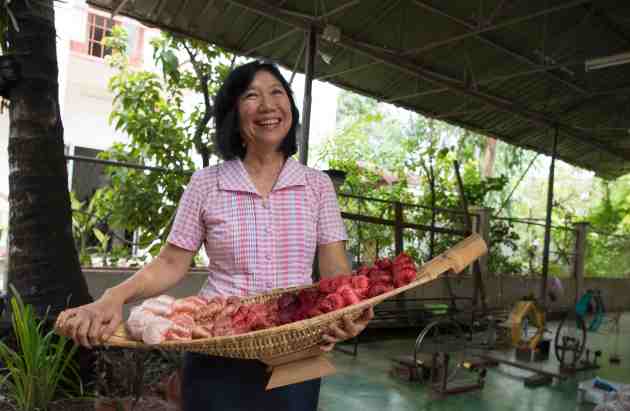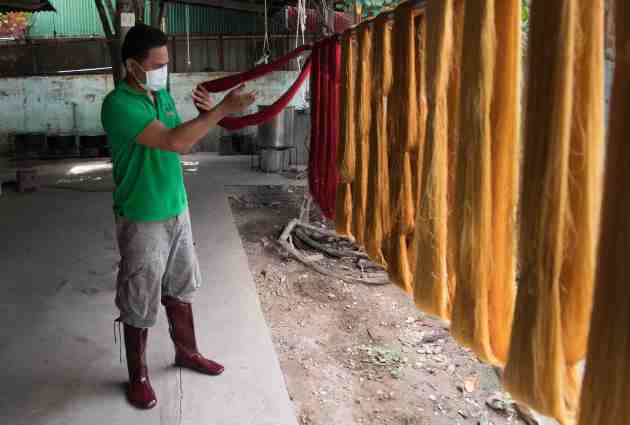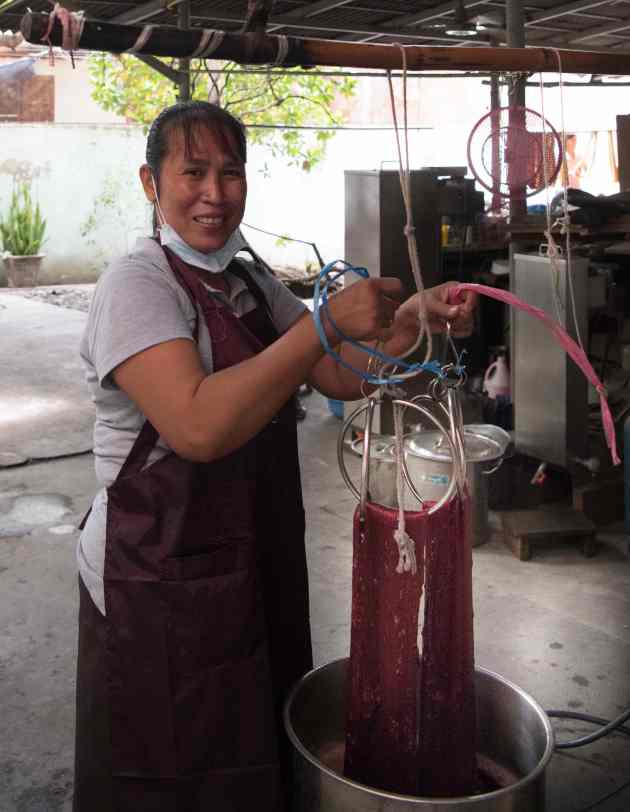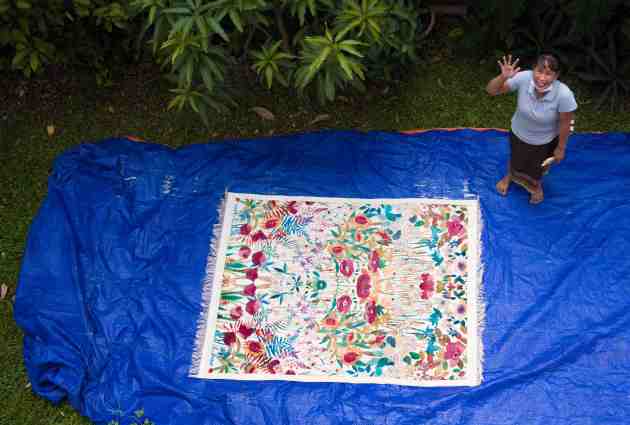The making of my beautiful Lao carpet – part 3

Lani: “We use natural dye only from trees and plants. The Burgundy color comes from the roots of the madder plant.”
The yarn for my carpet is completely transformed. The sticky stuff has been washed out, and the stiff and dull looking fibers have now become soft and shiny. Now they are ready to be dyed.
The co-owner of Magic Lao Carpets, Lani, shows me some samples of dyed yarn. The beautiful dark red color, called Burgundy, is going to be very prominent in my carpet.
“We use natural dye only from trees and plants. The Burgundy color comes from the roots of the madder plant,” Lani explains to me.
The madder plant has been known since ancient times for its powerful acid in the roots, which are harvested after two years in the ground. These are the roots, which will deliver the base color of my carpet.
Honey Gold
The radiant yellow color, called Honey Gold, is made from the flowers of Dok Chan, the climbing plant which is known all over Asia. The Dok Chan is often used for hair dyeing, drinks and as a food ingredient.

The Dok Chan flowers deliver the beautiful yellow color called Honey Gold for my carpet.
COLOR SHADING
Color shading is always a potential risk, when dying yarn and fabrics.
“We avoid color shading by dyeing the yarn for one carpet at a time. The red and blue colors are the most difficult ones to work with,” Lani says.
Her staff takes great care to ensure that nothing goes wrong in the further process. The water is tested for its PH value, and heated gradually to 100 degrees Celsius.

Tan is dyeing the silk yarn into Burgundy red for my carpet.
Magic Lao Carpet’s own dyeing expert, Tan, brings out of the first batch of yarn and dips it into the steaming red water and then washes it gently to get the excess dye out. It takes lots of water – 40 liters per kilo of yarn – to complete the process. The next day the yarn is being washed again, this time with natural soap, at 60 degrees Celcius to improve fastness and the treatment of eco-friendly fixer to increase fastness ratings.
Same procedure is followed for the yarn to be dyed into honey-gold. A total of 12 kilos of yarn for my carpet are ready for spinning.
Stay tuned for the next step on the way to producing my very own silk carpet.

Tan and her colleagues will say goodbye soon to this magnificent carpet, which they have made for a customer in the UK.